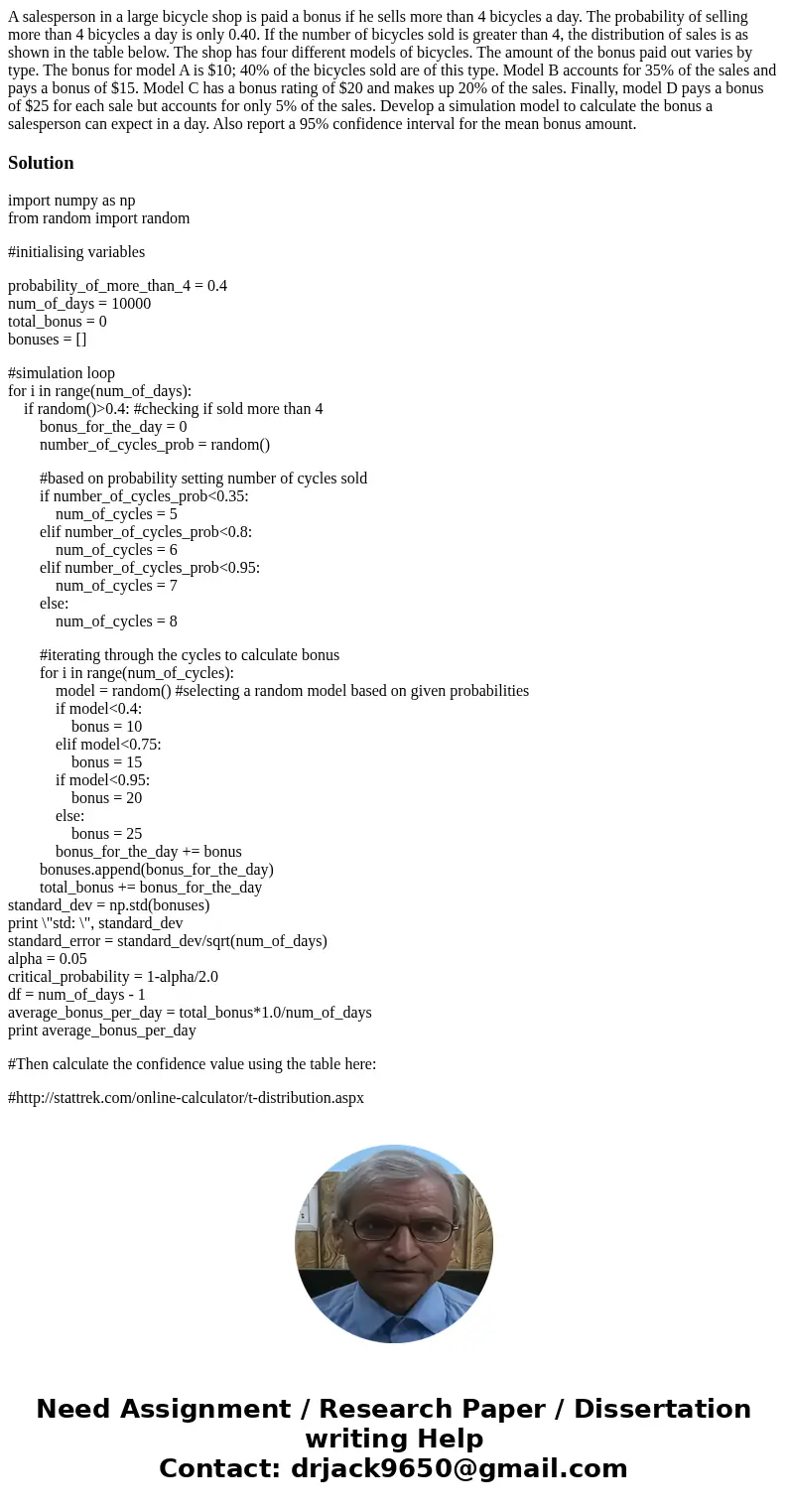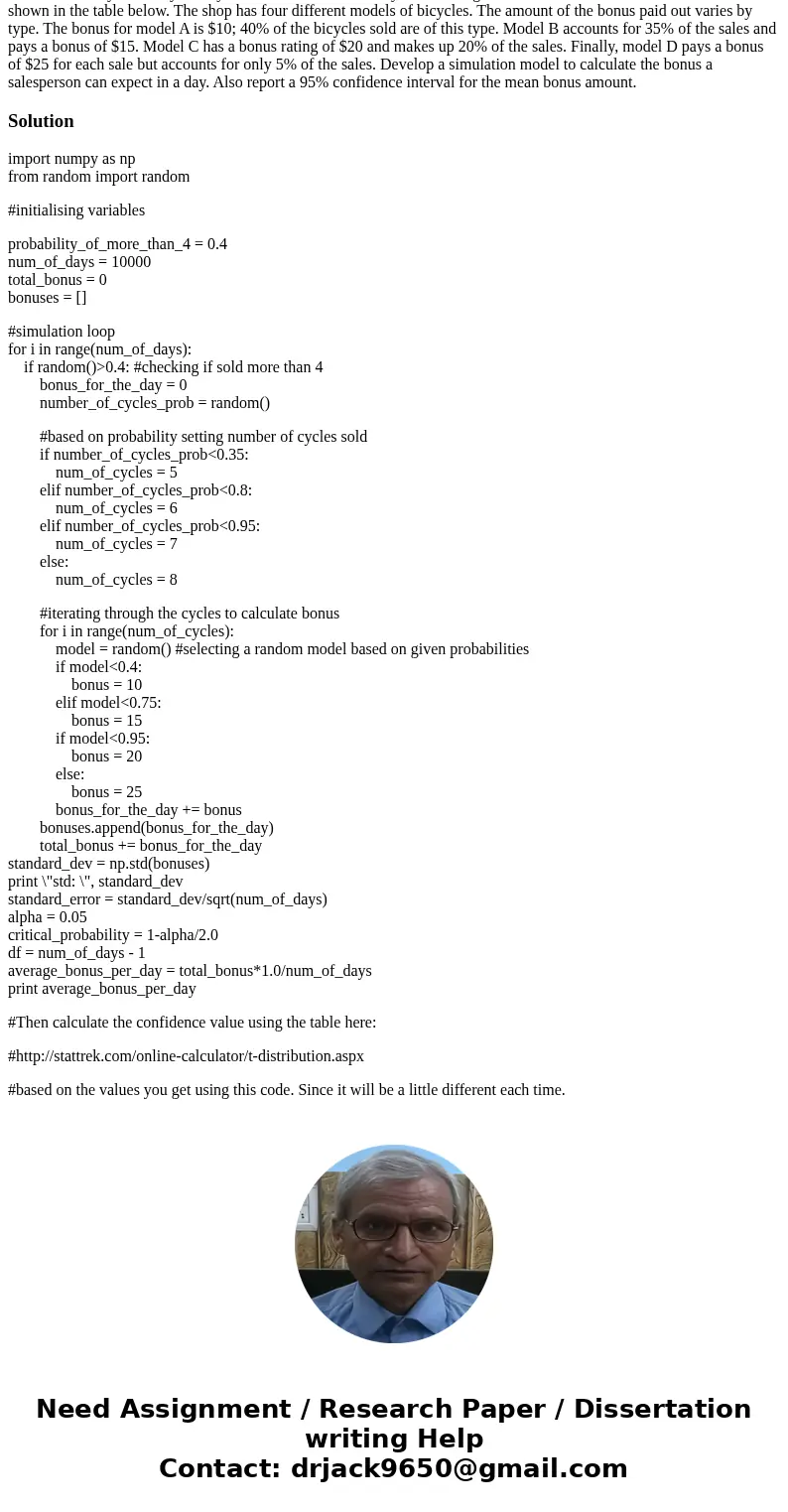A salesperson in a large bicycle shop is paid a bonus if he
Solution
import numpy as np
from random import random
#initialising variables
probability_of_more_than_4 = 0.4
num_of_days = 10000
total_bonus = 0
bonuses = []
#simulation loop
for i in range(num_of_days):
if random()>0.4: #checking if sold more than 4
bonus_for_the_day = 0
number_of_cycles_prob = random()
#based on probability setting number of cycles sold
if number_of_cycles_prob<0.35:
num_of_cycles = 5
elif number_of_cycles_prob<0.8:
num_of_cycles = 6
elif number_of_cycles_prob<0.95:
num_of_cycles = 7
else:
num_of_cycles = 8
#iterating through the cycles to calculate bonus
for i in range(num_of_cycles):
model = random() #selecting a random model based on given probabilities
if model<0.4:
bonus = 10
elif model<0.75:
bonus = 15
if model<0.95:
bonus = 20
else:
bonus = 25
bonus_for_the_day += bonus
bonuses.append(bonus_for_the_day)
total_bonus += bonus_for_the_day
standard_dev = np.std(bonuses)
print \"std: \", standard_dev
standard_error = standard_dev/sqrt(num_of_days)
alpha = 0.05
critical_probability = 1-alpha/2.0
df = num_of_days - 1
average_bonus_per_day = total_bonus*1.0/num_of_days
print average_bonus_per_day
#Then calculate the confidence value using the table here:
#http://stattrek.com/online-calculator/t-distribution.aspx
#based on the values you get using this code. Since it will be a little different each time.


 Homework Sourse
Homework Sourse